
How to Use Triple Axis Accelerometer (ADXL335): Examples, Pinouts, and Specs
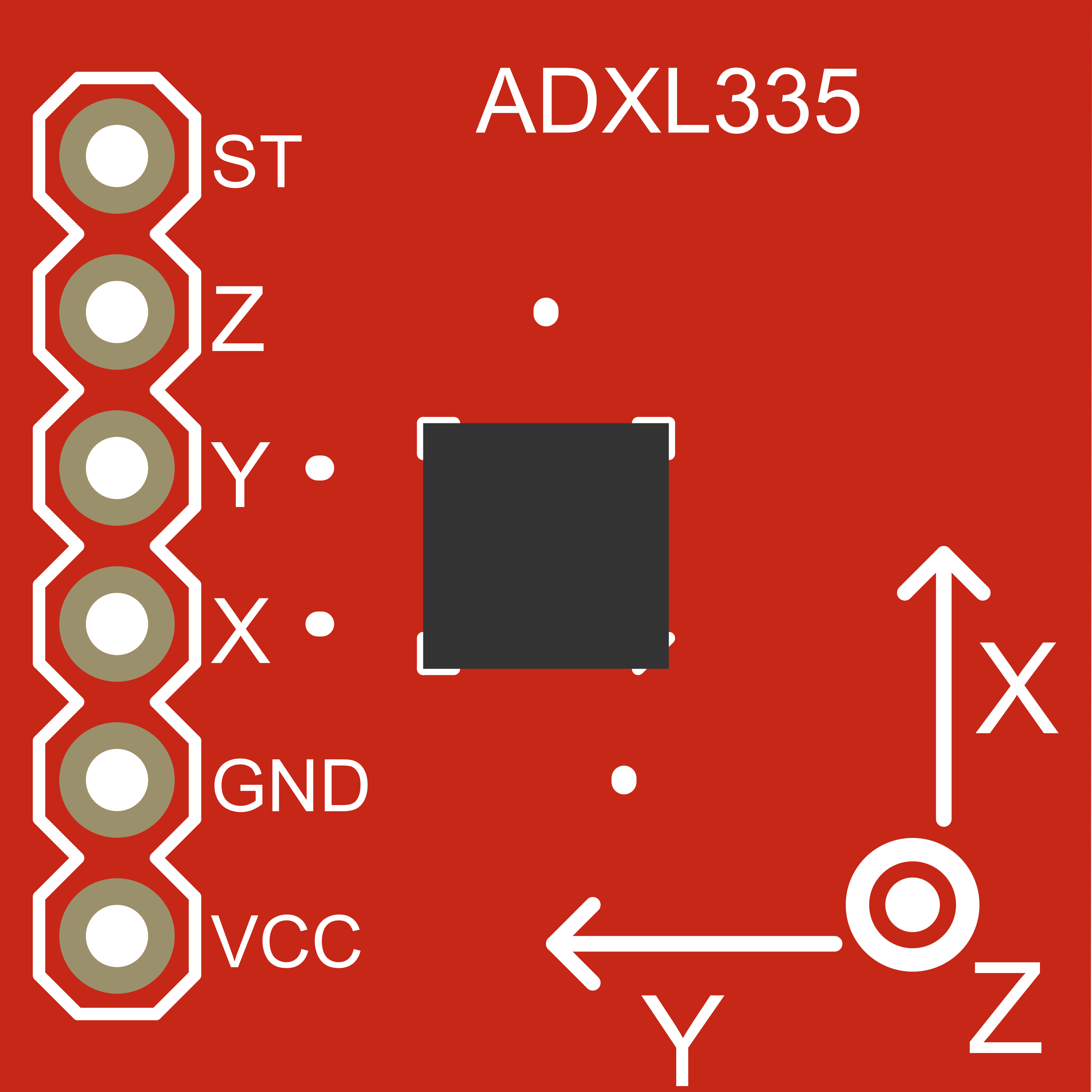
 Design with Triple Axis Accelerometer (ADXL335) in Cirkit Designer
Design with Triple Axis Accelerometer (ADXL335) in Cirkit DesignerIntroduction
The ADXL335 is a small, thin, low-power triple-axis accelerometer with signal-conditioned voltage outputs. It measures acceleration with a minimum full-scale range of ±3 g. It can measure the static acceleration of gravity in tilt-sensing applications, as well as dynamic acceleration resulting from motion, shock, or vibration. Common applications include gaming devices, mobile devices, sports and health devices, and system orientation detection.
Explore Projects Built with Triple Axis Accelerometer (ADXL335)
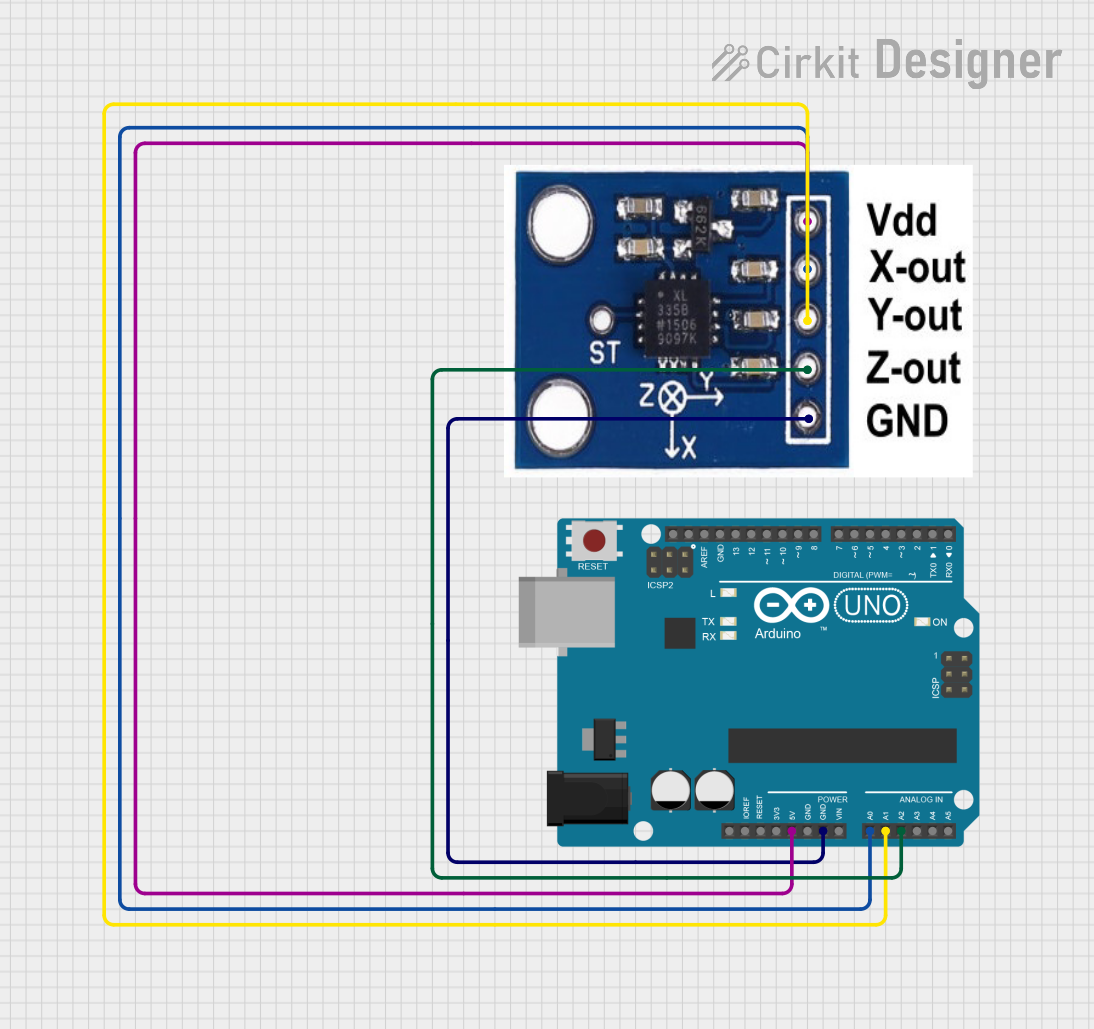
 Open Project in Cirkit Designer
Open Project in Cirkit Designer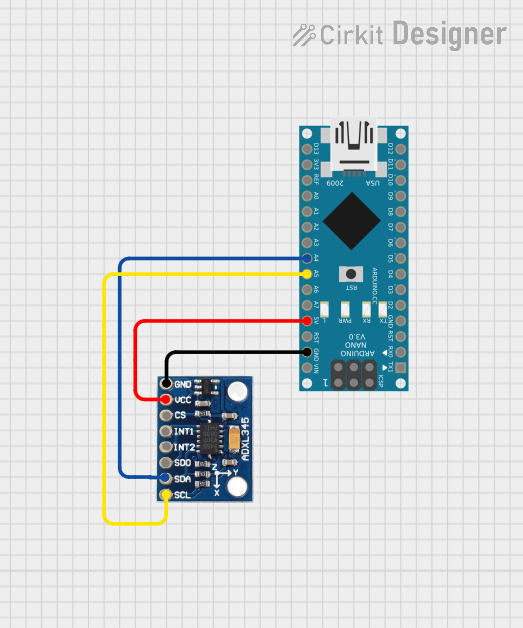
 Open Project in Cirkit Designer
Open Project in Cirkit Designer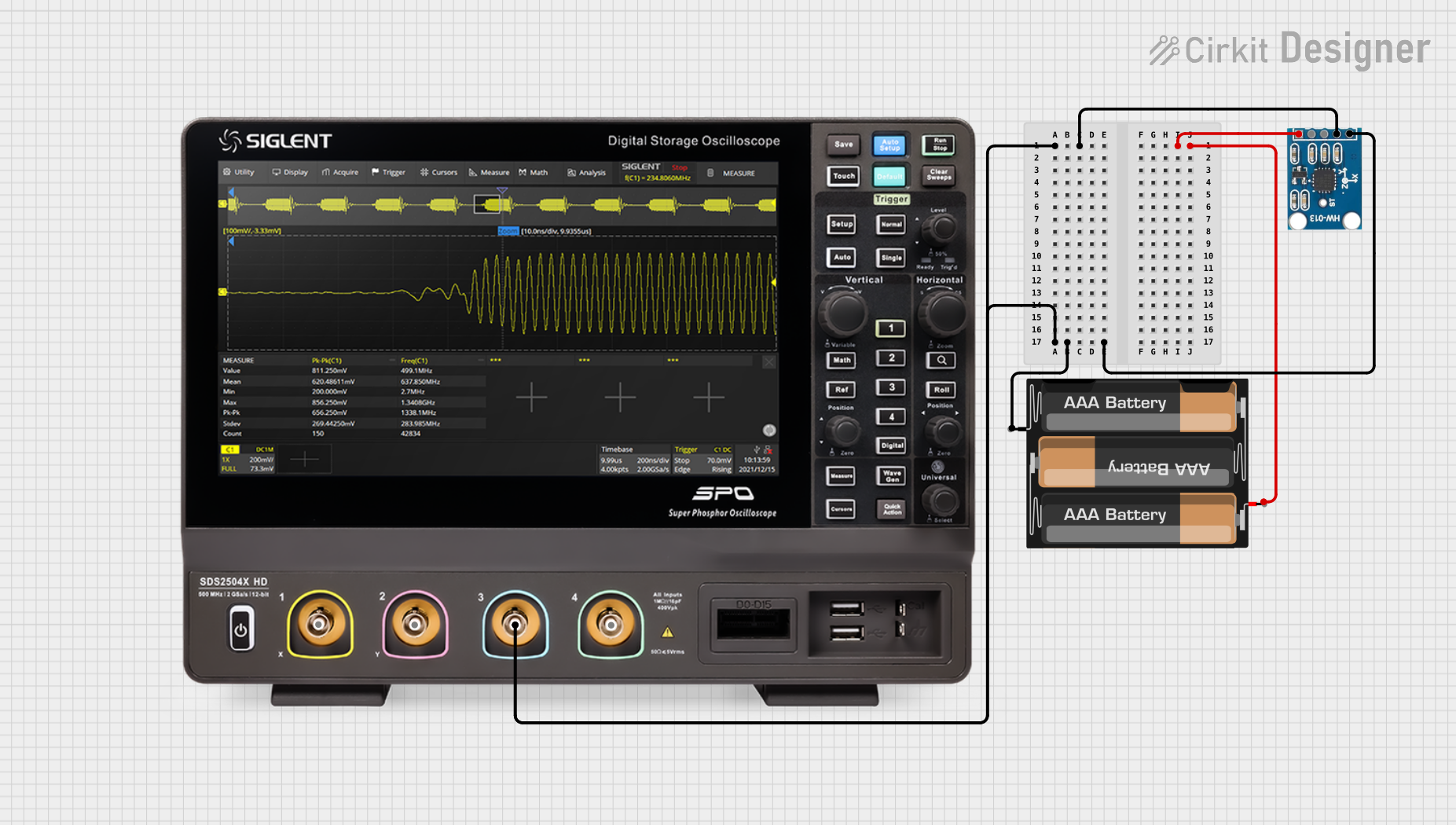
 Open Project in Cirkit Designer
Open Project in Cirkit Designer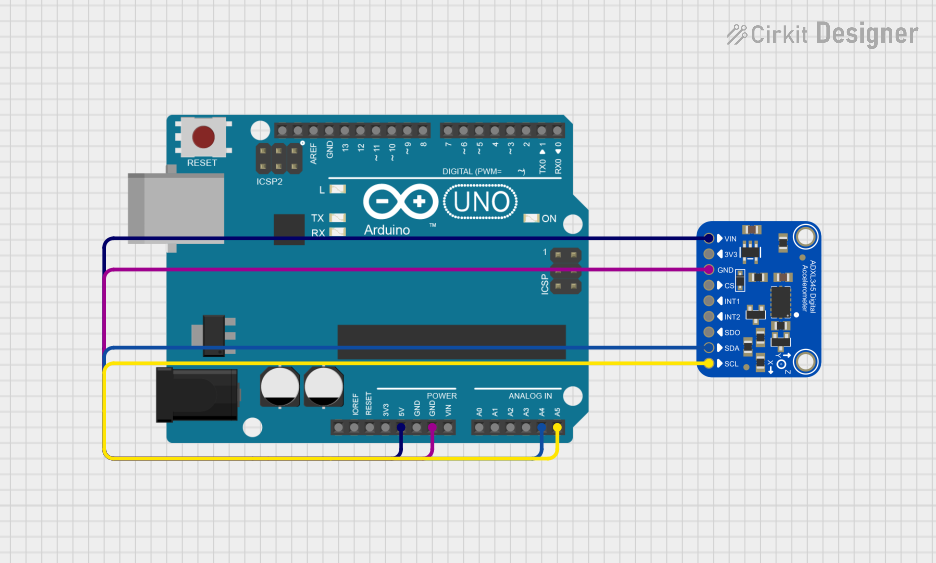
 Open Project in Cirkit Designer
Open Project in Cirkit DesignerExplore Projects Built with Triple Axis Accelerometer (ADXL335)

 Open Project in Cirkit Designer
Open Project in Cirkit Designer
 Open Project in Cirkit Designer
Open Project in Cirkit Designer
 Open Project in Cirkit Designer
Open Project in Cirkit Designer
 Open Project in Cirkit Designer
Open Project in Cirkit DesignerTechnical Specifications
Key Technical Details
- Power Supply: 1.8V to 3.6V DC
- Sensitivity: Typically 300 mV/g at 3V (X, Y, Z)
- Measurement Range: ±3 g
- Bandwidth: Selectable between 0.5 Hz and 1600 Hz
- Temperature Range: -40°C to +85°C
- Zero-g Bias Level: 1.5V (typical at V_S = 3V)
Pin Configuration and Descriptions
| Pin Number | Name | Description |
|---|---|---|
| 1 | VCC | Power supply (1.8V to 3.6V) |
| 2 | X-OUT | Analog voltage output for X-axis |
| 3 | Y-OUT | Analog voltage output for Y-axis |
| 4 | Z-OUT | Analog voltage output for Z-axis |
| 5 | GND | Ground reference for the power supply |
| 6 | ST | Self-test pin (leave unconnected if not used) |
Usage Instructions
Interfacing with a Microcontroller
To use the ADXL335 with a microcontroller like the Arduino UNO, follow these steps:
- Connect VCC to the 3.3V output on the Arduino.
- Connect GND to one of the GND pins on the Arduino.
- Connect X-OUT, Y-OUT, and Z-OUT to three analog input pins on the Arduino (e.g., A0, A1, A2).
- If using the self-test feature, connect ST to a digital output pin; otherwise, leave it unconnected.
Calibration
Before using the accelerometer, it is important to calibrate it to ensure accurate readings. This involves reading the outputs at a known orientation (e.g., lying flat) and adjusting the readings to account for zero-g bias and sensitivity.
Best Practices
- Use capacitors for noise reduction if the application is sensitive to noise.
- Avoid physical shock and vibration that exceed the specified limits.
- Ensure that the power supply is stable and within the specified voltage range.
Example Arduino Code
// Define the analog pins connected to the accelerometer
const int xPin = A0;
const int yPin = A1;
const int zPin = A2;
void setup() {
// Initialize the serial communication
Serial.begin(9600);
}
void loop() {
// Read the analog values from the accelerometer
int xVal = analogRead(xPin);
int yVal = analogRead(yPin);
int zVal = analogRead(zPin);
// Convert the analog values to 'g' values
float xG = ((float)xVal - 341.5) / 68.5; // 341.5 and 68.5 are calibration values
float yG = ((float)yVal - 341.5) / 68.5; // Replace with your calibrated values
float zG = ((float)zVal - 341.5) / 68.5;
// Print the results
Serial.print("X: ");
Serial.print(xG);
Serial.print("g, Y: ");
Serial.print(yG);
Serial.print("g, Z: ");
Serial.print(zG);
Serial.println("g");
// Delay before the next reading
delay(100);
}
Troubleshooting and FAQs
Common Issues
- Inaccurate Readings: Ensure that the accelerometer is properly calibrated. Check for any mechanical stress or thermal variation that may affect the sensor.
- Noisy Signal: Use capacitors to filter the noise, and keep the power supply stable. Avoid long wires to reduce electromagnetic interference.
- Unresponsive Sensor: Check the connections and ensure that the power supply is within the specified range.
FAQs
Q: Can the ADXL335 measure rotation? A: No, the ADXL335 measures linear acceleration. For rotation, you would need a gyroscope.
Q: What is the purpose of the self-test pin? A: The self-test pin is used to verify the functionality of the accelerometer. When activated, it applies a known force to the sensor for testing purposes.
Q: How do I convert the analog readings to 'g' values? A: The analog readings can be converted to 'g' values by first subtracting the zero-g bias level and then dividing by the sensitivity. Calibration is necessary to determine the exact values for these calculations.
Q: Can I use the ADXL335 with a 5V microcontroller? A: Yes, but ensure that the VCC is connected to a 3.3V supply, and use voltage dividers or level shifters for the analog outputs if the microcontroller's analog inputs are not 3.3V tolerant.